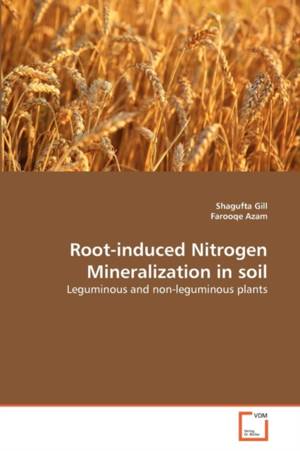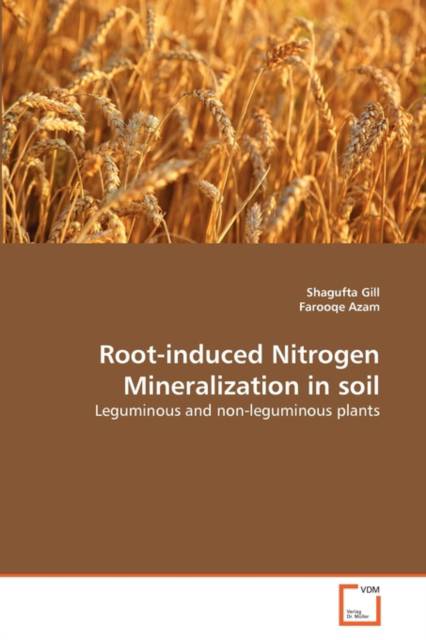
- Afhalen na 1 uur in een winkel met voorraad
- Gratis thuislevering in België vanaf € 30
- Ruim aanbod met 7 miljoen producten
- Afhalen na 1 uur in een winkel met voorraad
- Gratis thuislevering in België vanaf € 30
- Ruim aanbod met 7 miljoen producten
Zoeken
Root-induced Nitrogen Mineralization in soil
Leguminous and non-leguminous plants
Shagufta Gill, Farooqe Azam
Paperback | Engels
€ 100,45
+ 200 punten
Omschrijving
Nitrogen (N) is most often a limiting factor in crop production. While legumes are able to meet a substantial proportion of their N demand from biological fixation, non-legumes depend mainly on fertilizer N. However, both crop types obtain a good part of their N from soil organic matter mineralization of which is highly dependent on plant itself. The studies reported herein aimed at elucidating mechanisms responsible for the differences in N acquisition by the two plant types. Since roots are the major instrument of N acquisition, their role in inducing the soil deliver N for plant utilization hardly needs emphasis. The aspects of root-induced N mineralization studied were i) nitrogen acquisition using conventional and 15N methods, ii) quantification of rhizodeposits using 14C, iii) root architecture, iv) rhizospheric microbial population and diversity, v) soil enzymes like dehydrogenase, amylase, cellulase, nitrate reductase, and vi) potential nitrification. The work reported herein will help the agriculturists and environmentalists for breeding and managing crop plants for higher productivity vis-à-vis environmental issues and efficient use of nutrients particularly N
Specificaties
Betrokkenen
- Auteur(s):
- Uitgeverij:
Inhoud
- Aantal bladzijden:
- 176
- Taal:
- Engels
Eigenschappen
- Productcode (EAN):
- 9783639349245
- Verschijningsdatum:
- 29/04/2011
- Uitvoering:
- Paperback
- Afmetingen:
- 150 mm x 220 mm
- Gewicht:
- 281 g

Alleen bij Standaard Boekhandel
+ 200 punten op je klantenkaart van Standaard Boekhandel
Beoordelingen
We publiceren alleen reviews die voldoen aan de voorwaarden voor reviews. Bekijk onze voorwaarden voor reviews.








